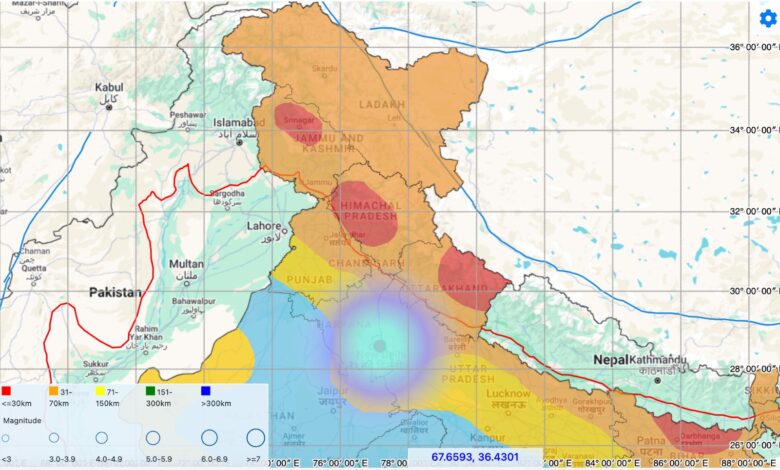Moderate Earthquake Hits New Delhi, Seismologists Investigate Underlying Structural Activity

On the early morning of February 17, 2025, New Delhi experienced a moderate earthquake, registering a magnitude of 4.0 on the Richter scale. The earthquake struck at precisely 05:36:55 IST, with its epicenter located at coordinates 28.59°N latitude and 77.16°E longitude, approximately 5 kilometers below the Earth’s surface. The tremor was felt across the National Capital Territory (NCT) of Delhi, an area that is no stranger to seismic activity due to its proximity to the seismically active Himalayan region.
The tremor added to the growing concern about the seismic vulnerability of the capital city, which, although located roughly 250 kilometers from the Himalayan collision zone, has a history of significant earthquakes. This includes notable events such as the 1991 Uttarkashi earthquake and the 1999 Chamoli earthquake, both of which had a profound impact on the region’s infrastructure and its populace.
Delhi, which sits in seismic zone IV according to India’s seismic zoning map, is often subjected to tremors from both distant and nearby sources. The region has witnessed several damaging earthquakes over the years, including the M6.5 earthquake in 1720 and more recent events like the M4.4 earthquake near Rohtak in May 2020. These quakes, along with subsequent aftershocks, have prompted a closer examination of Delhi’s subsurface geology and seismic risks.
Recent research into the seismotectonics of the Delhi region reveals complex structural activity beneath the city. According to a study led by seismologists from the Ministry of Earth Sciences, the Delhi region sits atop two contrasting structural environments. The western part of the region experiences reverse faulting, while the eastern section is dominated by normal faulting. These fault zones are separated by the NE-SW trending Delhi-Hardwar Ridge, also known as the Mahendragarh-Dehradun Fault (DHR-MDF), which is believed to be a major tectonic feature influencing seismic activity in the area.
The interaction between the DHR-MDF and the Delhi-Sargoda Ridge (DSR), another prominent tectonic feature, is believed to be a significant source of the region’s frequent seismicity. The DSR, running in a WNW-ESE direction, is thought to be a thrust fault. Stress transfer from these interacting zones to smaller, local faults may contribute to the shallow seismicity observed in Delhi, including the recent tremor on February 17, 2025.
A seismic monitoring program initiated two decades ago has been instrumental in tracking and analyzing the seismicity of the Delhi region. The dense network of seismic stations has provided valuable data that helps to estimate the strain energy released during earthquakes and further our understanding of the region’s complex subsurface geology. This network has also been crucial in tracking and identifying the faulting mechanisms of recent earthquakes, including the tremors of April and May 2020, which registered magnitudes of M3.5 and M3.4, respectively.
Delhi’s vulnerability to earthquakes is compounded by its socio-economic and infrastructure landscape. Home to more than 20 million people, the city has a wide spectrum of housing structures, from poorly constructed buildings to large infrastructure projects. The potential for damage from future seismic events remains a concern, particularly as ground motion amplification—caused by thick deposits of soft sediments, such as those found in the Yamuna plains—could exacerbate the effects of earthquakes.
Seismologists continue to monitor the situation, emphasizing the need for improved building codes and preparedness strategies to mitigate potential damage from future seismic events. As the Delhi region remains at risk, further research into the underlying tectonic structures and the interaction of local faults will be crucial in understanding the full extent of the region’s seismic hazards and ensuring the safety of its residents.




